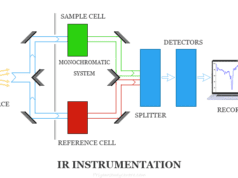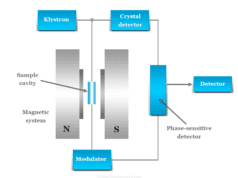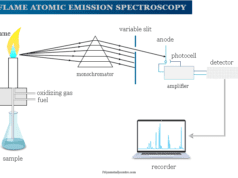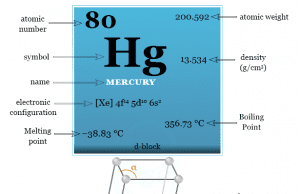What is inductively coupled plasma?
Inductively coupled plasma (ICP) work with atomic emission spectroscopy (ICP-AES) or mass spectrometry (ICP-AS) to give a powerful analysis technology capable of analyzing most of the periodic table of elements or metals at milligram to nanogram levels. The typical working process of inductively coupled plasma is given below the picture,
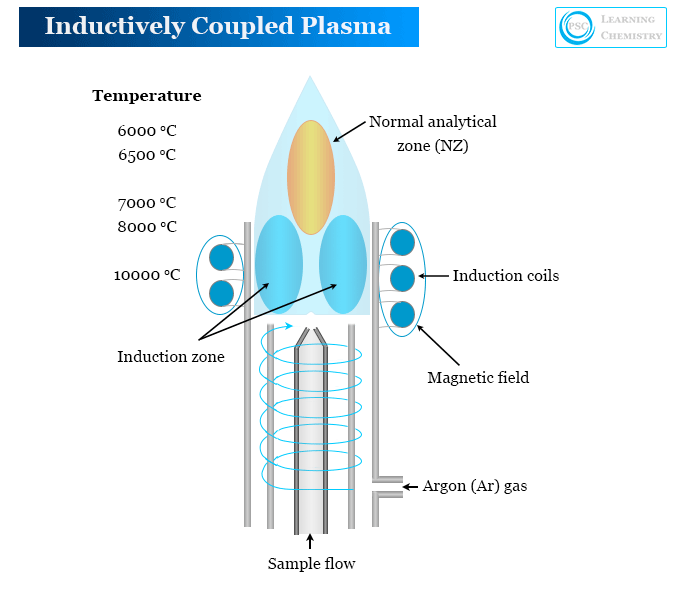
Inductively coupled plasma is a high energy ionized gas produced mostly from inert gases like argon. It contains a remarkable fraction of electrons and positive ions along with neutral molecules of argon. Argon-supported inductively coupled plasma is the most common technology rather than direct current plasma (DCP) and microwave plasma (MCP).
How does inductively coupled plasma work?
Inductively coupled plasma (ICP) is an ionization source that works by decomposing a sample into its constituent elements and ions.
The sample passes through a hole in the center of the discharge tube to the induction region where the inductive energy transfers from the load coil to plasma. White argon light is emitted at the induction region. The sample is carried to the center of the plasma by a nebulizer argon flow.
Various stages of the process take place when a sample droplet is introduced into the inductively coupled plasma machine.
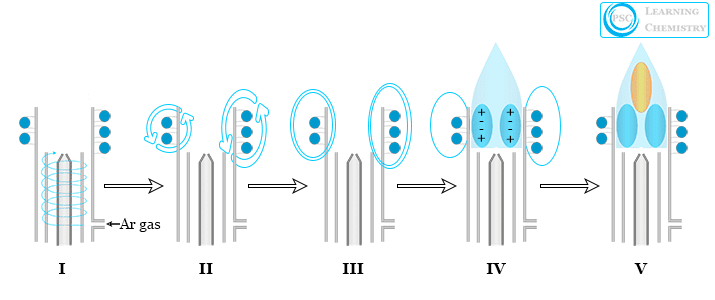
- In the first stage, argon is circulated through the coaxial tube shown above the picture.
- When a radio frequency field is applied, argon gas starts circulating around the radio frequency signal in the second stage of plasma technology.
- In the third stage, argon gas gets charged and produces electrons and charged argon ions.
- A spark is applied at the mouth of the coaxial tube to produce plasma in stage four.
- In the final stage, an analyzed sample is injected into the plasma at a very high temperature.
Applications
Inductively coupled plasma atomic emission spectroscopy and mass spectrometry is a powerful elemental analysis technology capable of analyzing most of the periodic table of elements and chemicals at milligram to nanogram levels.
ICP-AES analysis
The instrumentation of ICP-AES is also called inductively coupled plasma optical emission spectroscopy (ICP-OES). It is an instrument that ionizes gases to an electrically conductive state or plasma state of matter. It needs to be operated by a highly skilled person than an AES machine. The detection limit is better in ICP-AES while the detection limit of AES instruments depends on the kind of metals which we analyze.
ICP-AES technology can be used mainly for the analysis of agricultural products, food products, and pharmaceutical products.
- Usually, traces of metals like calcium (Ca), copper (Cu), iron (Fe), manganese (Mn), magnesium (Mg), phosphorus (P), potassium (K), and zinc (Zn) from beer or wine can be analyzed by the ICP-AES technique.
- Similarly, aluminum from blood, copper in brain tissue, selenium in the liver, and sodium in breast milk can be analyzed by ICP-AES instrumentation.
- In earth science, lanthanides in rock salts can be analyzed by this technique.
- In environmental chemistry, many metals such as iron, cadmium, copper, molybdenum, nickel, vanadium, and zinc from seawater can be easily analyzed by ICP-AES instrumentation.
- Trace metals from alloys and steel are also analyzed by the ICP-AES instrument.
- It is used for analyzing copper, iron, nickel, and silicon from lubricating oils or gasoline.
Inductively coupled plasma mass spectrometry
Inductively coupled plasma mass spectrometry (ICP-MS) is a type of mass spectrometry instrument where plasma can be used to ionize the sample. Plasma can atomize the sample to create atomic and small polyatomic ions. Then these atomic and small polyatomic ions are detected by mass spectrometry.
Compared to spectroscopic instruments like atomic absorption spectroscopy, and thermal ionization mass spectrometry, ICP-MS has greater speed, precision, and sensitivity.
Applications
ICP-MS instruments are used mainly for medical or forensic analysis. The common applications of the ICP-MS instrument are,
Medical science
In medical science, the ICP-MS instrument is popular for the analysis of blood, urine, plasma, and serum. It is also used for the detection of heavy metal poisoning.
Forensic science
In forensic science, laser ablation-inductively coupled plasma mass spectrometry (LA-ICPMS) instrument is used for analyzing samples found at the crime spot. Hence LA-ICPMS technology analyzes the clothing fibers and glass fragments collected by forensic experts to determine the origin of a material like a manufacturer or brand.
Environmental science
In the environmental field, the ICP-MS instrument is a useful tool for soil, water, and other toxic material analysis.
Geochemistry
It is used widely in geochemistry for radiometric dating. For example, to analyze the relative abundance of different isotopes in a particular amount of uranium and lead, we used ICP-MS technology.
Pharmaceutical industry
In the pharmaceutical industry, ICP-MS instrumentation detects the inorganic impurities in drugs and their synthetic ingredients.
Proteins analysis
The combination of ICP-MS and size exclusion chromatography give a powerful tool for identifying and quantifying native metal cofactor present in proteins and biomolecules. It is also used to analyze the phosphorylation status of protein molecules.
Atomic absorption or emission spectroscopy can measure a single element at a time but inductively coupled plasma mass spectrometry (ICP-MS) is capable of analyzing all elements simultaneously.

